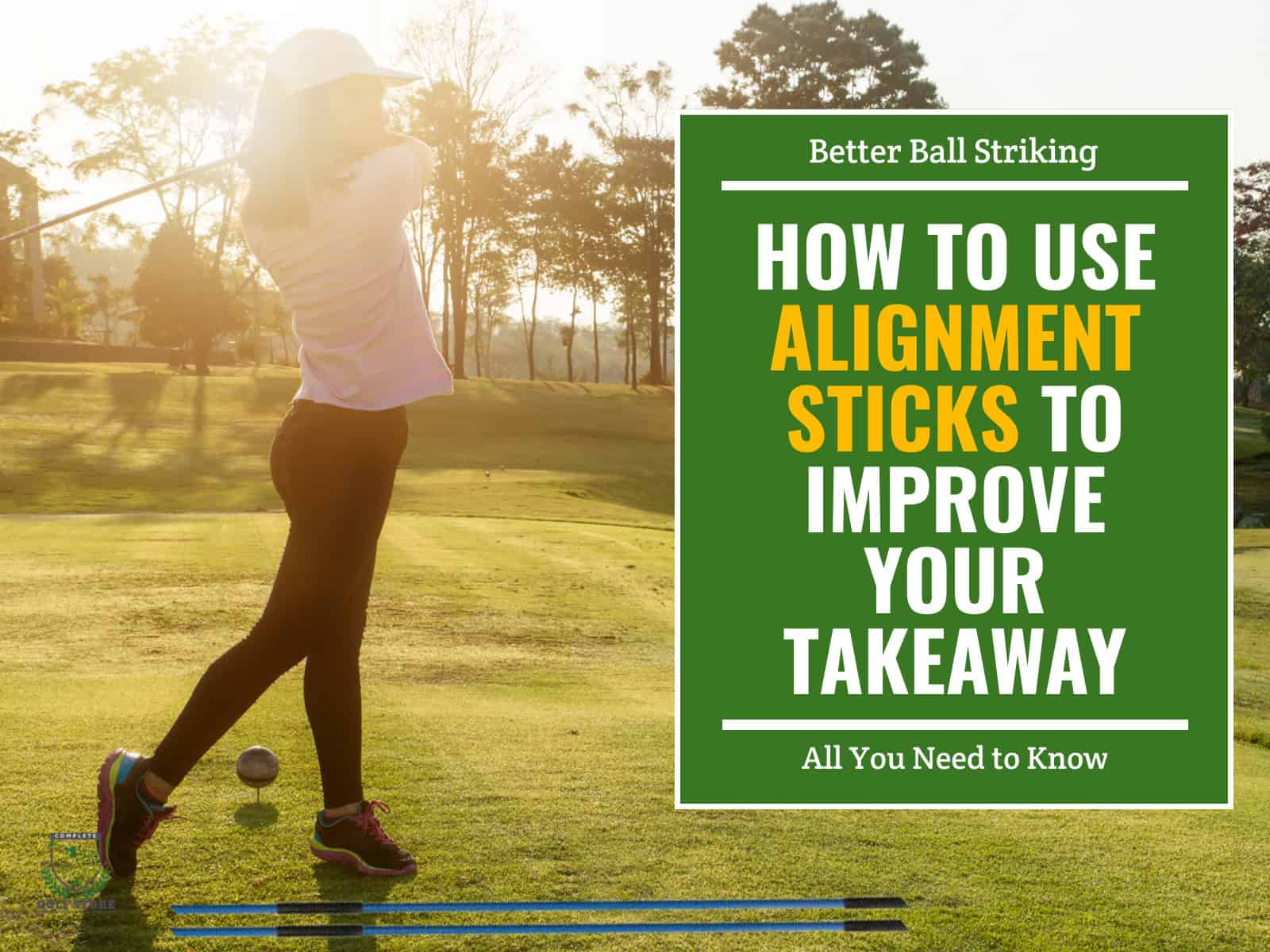Chipping can be one of the most frustrating parts of the golf game. Many players will even reach for their putters when they should be chipping. Hence, the Texas Wedge.
Throughout this article, we share tips and tricks to teach you how to chip like a pro.
Our team of golf enthusiasts has spent countless hours refining the best tips that will teach you how to chip more effectively on the course.
Let’s get started!
The Basics—Different Types of Chips

A chip is a shot hit within 50 yards of green, which most often does not require a full swing. Learning how to chip is one of the most important things every golfer does. It is not something you can pick up right away, and while it may appear easy, it involves nuance and creativity. You do not learn how to chip in a year or two, but continue to practice and evolve your skills for as long as you play. Apart from practicing your chip shots, you should already have mastered your golf club grip, which can be done by going through our guide on how to hold a golf club correctly.
Before you can chip like Phil Mickelson, you have to learn the basics. We break down a few of the most common types below. Here is a short video (02 min. 57 sec.) of Phil teaching the best chipping techniques to get started:
Bump and Run
The bump and run is the easiest method to master when learning how to chip. Most commonly practiced with an 8- or 9-iron, it requires a small putting-like stroke and stays close to the ground. To do this, keep a narrow stance, an even weight, and position the ball slightly back in your stance. Take a small swing and the ball will travel low to the ground with minimal spin.
With the bump and run, there is a small margin of error and your mistakes will be less severe than with other styles. While distance might be hard to control, your direction will be accurate, even when learning how to chip.
Here is another short video (01 min. 19 sec.) with Rory Mcllroy showing the right technique of executing a bump & run chip shot:
Pitch vs Chip
Chips and pitches are two different types of short-game shots, each with its specific technique and purpose. While they are both used around the green, they have distinct characteristics and are employed in different situations.
A chip shot is a low-flying shot played with minimal loft, usually with a less-lofted club like a 7-iron, 8-iron, or a specialized wedge called a “chipper.” The objective of a chip shot is to get the ball rolling quickly along the ground and control its trajectory, typically with minimal spin. Chip shots are used when you are close to the green with a relatively clear and flat path to the hole.
A pitch shot is a higher, softer shot played with more loft, typically using wedges such as a sand wedge, gap wedge, or lob wedge. The objective of a pitch shot is to get the ball to land softly on the green with backspin, allowing it to stop quickly or even spin backward. Pitch shots are used when you need to carry the ball over an obstacle, like a bunker or a mound
Flop Shot
The shot everyone wants to hit, but only a few can. A flop shot involves opening the clubface of sand or lob wedge, taking a sweeping swing, and popping the ball up. To do this, the ball will need to be forward in your swing, as does your weight. This is the hardest chip shot to master and should not be attempted before working on other styles.
Here’s an amazing video (1 min. 10 sec.) from Taylormade’s Youtube channel with the legend- Tiger Woods teaching the basics of a flop shot:
When executed correctly, the ball will land soft and roll a short distance. This sounds nice and looks nice when it happens, but it is very easy to go wrong with both direction and distance. With an open clubface, it is easy to blade chips and end up further away from your target than you started. Rather than being able to use the entire clubhead, you rely on a small portion and have much more room for error.
We also have a detailed article devoted to How To Hit A Flop Shot. Make sure you check it out.
When to Use Each Type of Chip?
You can chip from a variety of areas, under many conditions during a single round of golf. Most new golfers struggle with determining what approach to take as they learn how to chip. While we can’t cover every situation, we’ll look at a few you can build off of on your own.
When you are on the fringe or in a fairway leading to the green, you should use the bump and run. This is the easiest scenario to decide. Don’t overthink it, pull out your 8-iron and bump it onto the green.
As you get further from the green (or any area on the same elevation level as the green), you should continue to bump and run. When you get a bit further or the terrain is uneven, pitch the ball to avoid any bumps on the path of your ball.
Following this theme, when you need to get the ball in the air from the fairway or rough, you should chip or pitch. If you are close to the green, a chip shot is better. As distance increases between you and the green, transition to a pitch shot.

When your ball is in the sand, it is a different scenario. For the most part, you will be chipping out of the sand. In these situations, your only goal is that your next stroke is a putt. Don’t get fancy, don’t overthink it. Get the ball out of the trap.
The Best Type of Chip Shots for Golfers Based on Skill Level

As you improve your skills around the green, the best club to chip with will change. While every level player benefits from the bump and run chip, more skilled players can trust other types of short shots. Situational awareness is also something that develops over time, but we’re sticking to the basics.
For a Beginner
Inexperienced or less skilled golfers should bump and run whenever possible. It is important to improve your swings as a beginner to get the hang of chipping. For the time being, players of this skill level should chip or pitch the ball only when it is absolutely necessary.
We suggest reading our guide about the Golf Swing Basics if you are a beginner; it will help you greatly!
For an Intermediate Player
As your scores drop from the 100s to the 90s, you can allow yourself a bit of variance in chipping. You are still learning how to chip at this stage, but you can add more chips and pitches into your regular shots. While a beginner is aiming for the green, an intermediate golfer can take aim at pins.
For the Low Handicappers
Low handicappers are the best golfers and the only time they are learning how to chip is when they add new and creative shots to their already impressive arsenal. These golfers will still bump and run, but chip and pitch more often than not. These are also the only golfers who should (and can) pull off the flop shot.
How to Chip; The Rule of 12
The rule of 12 is useful for those learning how to chip because it provides insight into the flight-roll ratio of different methods of chipping with different clubs. Around the greens, your goal is to get your ball moving toward the hole and have it stop at the correct distance. There is a formula that an 8-iron will roll four times as far as it flies (1:4 ratio) and a sand wedge will roll as far as it flew (with a 1:1 ratio).
By taking the formula into account as discussed in the video below (1 minute 51 seconds) and this article, you will be able to better select your club based on distance from the hole, how much room you have to work with, and how long you need the ball to roll.
Additionally, you can use training aids to help improve your chipping; you can choose from our list of the Best Golf Training Tools.
What If The Conventional Way of Chipping Is Not Working?
If you have been trying hard to perfect your chipping strokes, but you can’t seem to achieve the desired consistency using the “conventional” chipping techniques, We do have one more trick you can try; we like to call it the Danny Maude technique. The new different way of chipping consists of a modified stance, ball position and the way your club approaches the ball.
In the following video (12 min. 08 sec.), PGA Professional coach Dany Maude will guide you through the details of his unique way of chipping. We encourage you to try different methods to see which one helps you achieve the best results more consistently:
Frequently Asked Questions
Let’s now answer some frequently asked questions related to chipping in golf to help you better understand chips and the best way to achieve them.
Should I break my wrists when chipping?
No, it’s generally advisable to avoid breaking your wrists excessively when chipping. Keeping your wrists stable during the chip shot helps maintain consistency, clean ball-first contact, and a controlled trajectory.
Excessive wrist movement can lead to inconsistent results, such as thin or fat shots, and reduce your ability to control spin on the ball. Focus on a stable setup and using a pendulum-like motion with your arms and shoulders to achieve a more controlled and predictable chip shot.
Do you turn your hips when chipping?
The general practice is to minimize hip turn. Chipping is a short and controlled shot, and excessive hip rotation can lead to inconsistency and loss of control. Instead, focus on maintaining a stable lower body and using a more compact and controlled motion with your arms and shoulders.
The key is to create a simple and repeatable swing, using your upper body as the primary source of power and control. By limiting hip turn and keeping your weight slightly forward, you can achieve better chipping accuracy and distance control around the green.
Do you turn shoulders when chipping?
Yes, turning the shoulders is an essential component of the proper technique. While the hip turn is minimized for chipping, the shoulders play a significant role in generating a controlled and consistent swing. Turning the shoulders allows you to create a stable coil and power the chip shot with a more reliable upper-body motion.
By using your shoulders effectively in the chipping motion, you can achieve better ball contact, distance control, and overall chipping performance around the green.
How can I improve my chipping accuracy?
To improve chipping accuracy, focus on these key tips:
– Practice regularly on the chipping green to develop a feel for distance and control. Work on a consistent setup and grip, keeping your wrists relatively stable during the shot.
– Focus on a smooth and controlled swing, using your arms and shoulders like a pendulum. Keep your weight slightly forward and maintain a firm left wrist (for right-handed players) through impact.
– Work on visualization and pick a target spot to aim at.
– Play different chip shots around the green, experimenting with different clubs and techniques to gain versatility.
Final Thoughts
Knowing when and how to chip becomes easier over time! Remember, don’t be afraid to chip. As long as you continue practicing and keeping the fundamentals in mind, you’ll be chipping like the pros before you know it.
We hope our guide helps you achieve better chip shots in different situations; If you have any questions or comments, feel free to contact us.
Thanks for reading!





